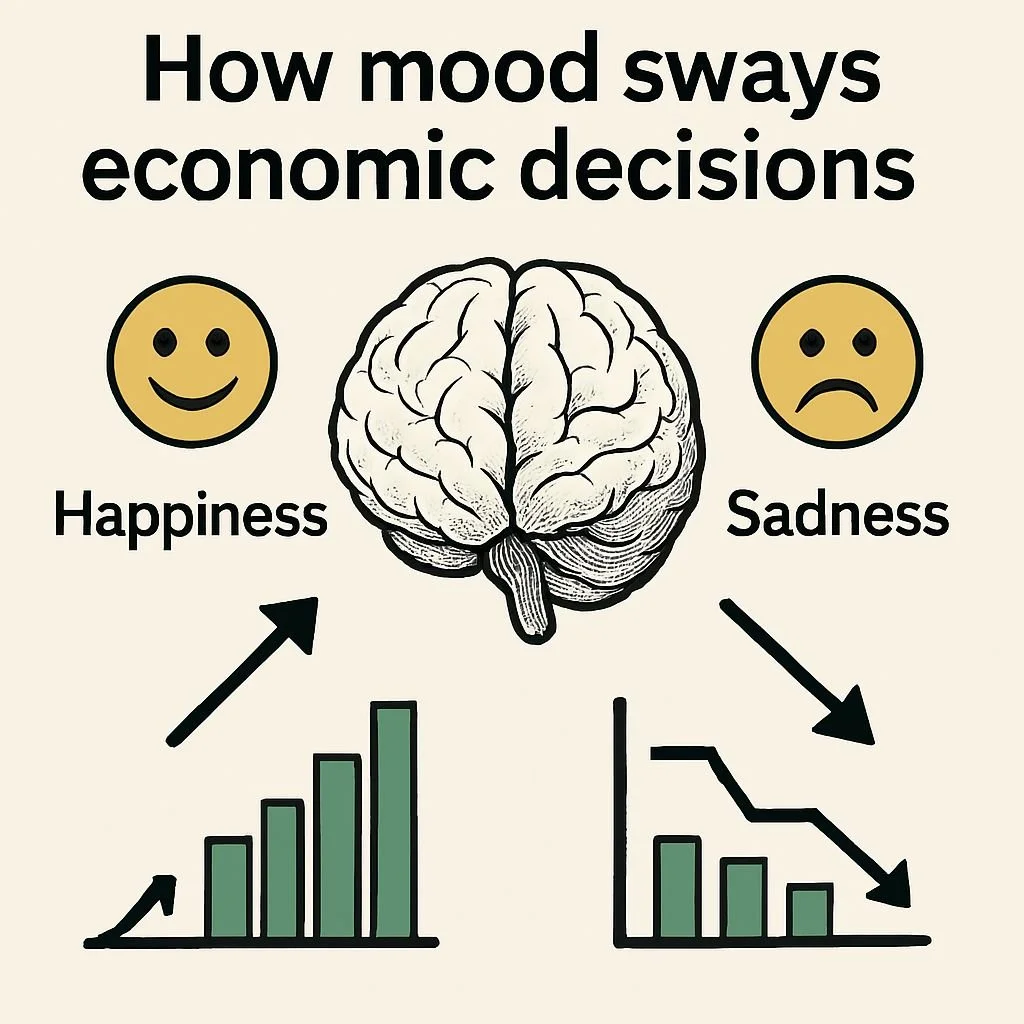Mood and Money: How Emotions Shape Economic Decisions
Marketers have long understood that emotions influence behavior—but a new study reveals just how deeply momentary mood states can shape the decisions people make around risk, reward, delay, and effort.
Published in Nature Communications Psychology, the study (“Momentary mood biases economic choices via distinct affective pathways,” Gentsch et al., 2025) explored how people’s mood—whether happy or sad—affected their willingness to engage in different types of economic trade-offs. The results were striking: our emotional state doesn’t just color our perceptions—it directly alters our decision-making profile.
Mood as a Behavioral Lens
The researchers found that participants in a positive mood were more likely to:
Take bigger risks
Opt for delayed but larger rewards
Tolerate more effort to achieve higher payoffs
In contrast, those experiencing sadness consistently chose:
Smaller, immediate gains
Simpler, lower-effort options
Safer, more conservative paths
But here’s what makes this research particularly valuable: it didn’t rely on self-reported feelings. Instead, it used physiological signals—including facial expressions, skin conductance, and pupil dilation—to objectively track mood states. These signals were then used to predict how people would behave in economic scenarios, and the model proved remarkably reliable.
Implications for Marketers and Decision Designers
This insight offers a powerful new lens for marketing strategy, behavioral design, and creative execution. If our mood shapes what we perceive as “worth it,” then emotional context becomes a critical variable in how people engage with content, offers, or choices.
Here are three takeaways for marketing teams:
1. Timing Is Strategy
Consumers are more receptive to complex or high-commitment decisions when they’re in a good mood. This opens up smart timing opportunities:
Plan launches or call-to-actions during mood-boosting windows (e.g., Friday afternoons, post-event wins, sunny weather)
Re-engage users when you know their energy or optimism is higher
2. Frame for Feeling
Good mood = greater tolerance for effort. Bad mood = preference for ease.
When targeting upbeat audiences, emphasize long-term value or unique payoff
When addressing anxious or tired audiences, lean into simplicity and convenience
3. Guide Attention Through Emotion
The study also points toward emotion-guided attention: when people are happy, they tend to notice high-reward elements. When they’re sad, they gravitate toward low-effort, comfort-oriented cues.
Prioritize emotionally “congruent” content in the visual hierarchy of your creative
Match your offer framing to the mood state you expect the audience to be in
What This Means for Brainsuite Users
At Brainsuite, we specialize in surfacing how creative assets emotionally resonate—through neuroscience-backed models that assess attention, sentiment, and emotional engagement. While we don’t track real-time user mood, our content-level insights can help you frame, position, and optimize assets based on the emotional tone they convey.
Mood matters. And with Brainsuite, you can make sure your messaging fits the moment.
👉 Explore our platform and see how Brainsuite empowers marketing teams to create emotionally aligned, high-impact campaigns
Sources
Gentsch, K., MacGregor, A., Hernandez, L., Ghosh, A., Singer, T., & Apps, M. A. J. (2025). Momentary mood biases economic choices via distinct affective pathways. Nature Communications Psychology. 5 April 2025. https://www.nature.com/articles/s44271-025-00241-6

